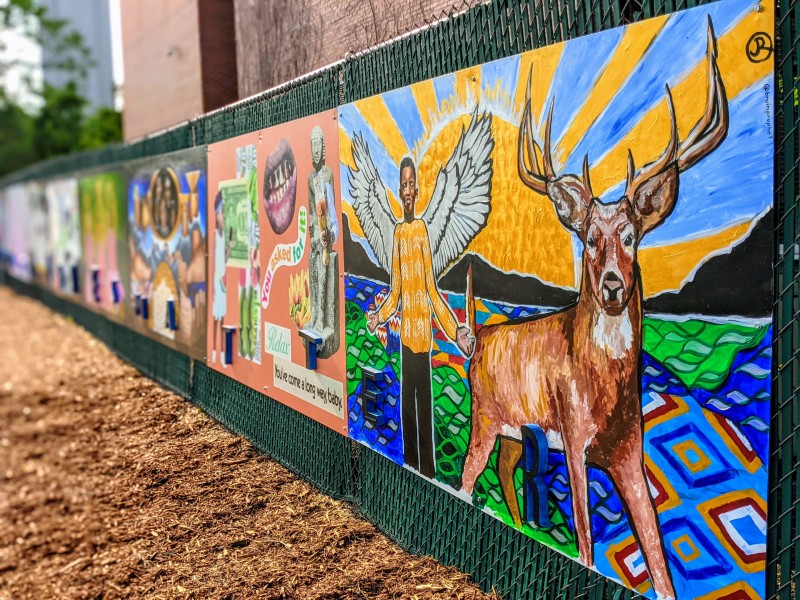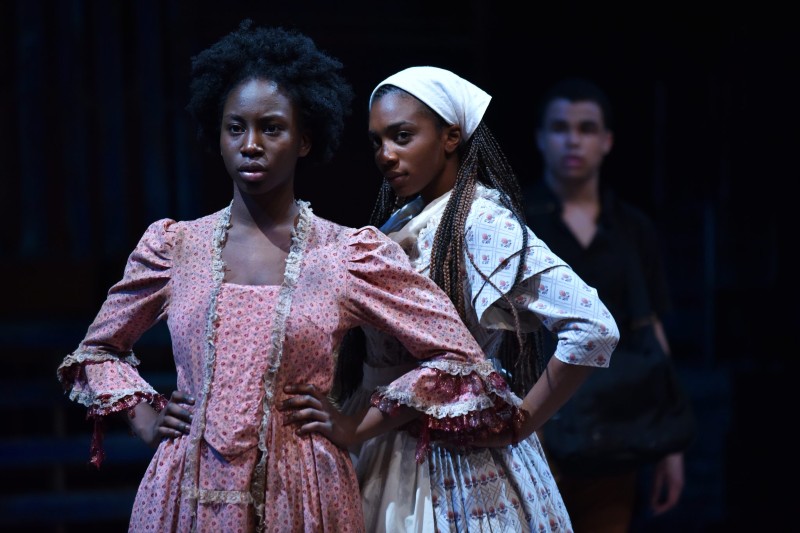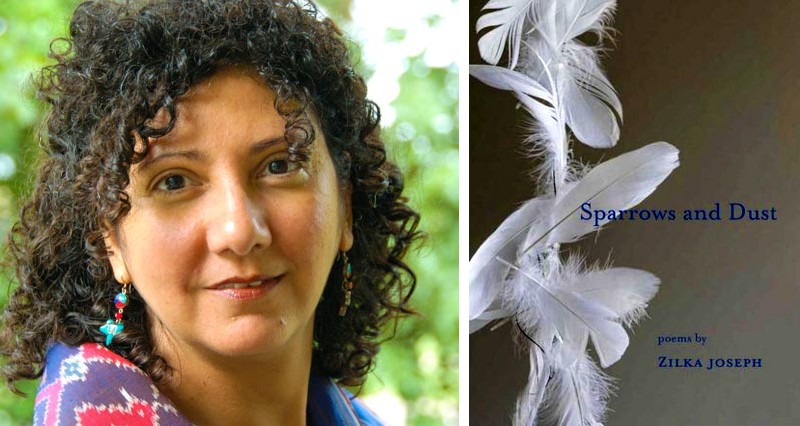AADL Black Lives Matter: Mural Dedication

On Friday, July 23, at 7 pm, join the Ann Arbor District Library for the dedication of the Black Lives Matter Mural newly installed on Library Lane.
This mural showcases the work of eight Black artists who show what the phrase Black Lives Matter means to them. This project was commissioned by the Ann Arbor District Library in the summer of 2020 as part of its Call for Artists.
Two new outdoor sculpture exhibits offer public art in Washtenaw County

Right: Sculpture tower by Jen Gerrity, Sherry Hall, Ben Mattison, Daria Paik, and Jin Young Yeum at Matthaei Botanical Gardens. Photo by Jeri Hollister.
Even with everything starting to open up again—including the University of Michigan Museum of Art—you may understandably still feel a little weird about spending time indoors with other people. But two new outdoor sculpture exhibitions offer the delights of visual art alongside maximum air circulation.
University of Michigan School of Music, Theatre & Dance announces 2021-2022 productions

Drama is back at the University of Michigan.
No, I'm not talking about any political, criminal, or social issues.
The University of Michigan School of Music, Theatre & Dance (UMSMTD) announced 10 performances and one studio production as part of its 2021-22 production season, which runs from September 30 to April 17.
“Our goal this year is to return to creating the same high-quality productions you’ve come to know and love while providing more flexibility to better accommodate our audiences’ health and safety needs,” said Jeffrey Kuras, executive director of the school’s University Productions, in a press release.
Some of the other annual performances—Grand Night for Singing, Halloween Concert, Band-O-Rama, and Collage Concert—will be announced at a later date. Tickets for all the events will eventually be available at tickets.smtd.umich.edu.
"The SMTD Flex Series will allow audiences to select the four shows they would like to attend at a discounted price," according to the UMSMTD press release. "The Flex Series joins the existing Power Series, which allows audiences to purchase all four shows at the Power Center for the Performing Arts for a discounted price." (The Power Center turns 50 this year.)
Here's a rundown of UMSMTD's 2020-2021 season events:
Friday Five: Andrew W.K., Slug Love, Mirror Monster, Shooting Stars, Oren Levin

Friday Five highlights music by Washtenaw County-associated artists and labels.
This week features headbanging from Andrew W.K., shoegaze via Slug Love, synth-pop from Mirror Monster, hip-hop by Shooting Stars, and radio-pop from Oren Levin.
Review: Ann Arbor Summer Festival’s “A Thousand Ways (Part One): A Phone Call”

By sheer coincidence, I experienced the Ann Arbor Summer Festival’s theatrical presentation of A Thousand Ways (Part One): A Phone Call at a time when I’d also revisited Mandy Len Catron’s viral essay, “To Fall in Love with Anyone, Do This,” which references 36 questions purported to accelerate intimacy between two strangers.
What’s the connection, you ask?
A Thousand Ways (created by Brooklyn-based troupe 600 Highwaymen) is a phone conversation between you and a stranger, moderated by a pre-recorded, Siri-like voice that poses questions, offers pieces of an imagined narrative, and issues orders. By the end of the hour-long call—filled with seemingly innocuous queries that nonetheless revealed a great deal about ourselves—I felt strangely connected to, and emotionally invested in, the other participant.
To the point that I felt a little heartbroken when I realized that neither of us had enough information to find each other later in real life.
And I felt this sadness despite the fact that we never exchanged names or laid eyes on each other (the latter was part of psychologist Arthur Aron’s experiment, which gave rise to the infamous 36 questions).
The impact struck me as especially curious in this moment, when we’re all slowly emerging from our respective pandemic hidey-holes. We’ve been able to talk by phone with each other this whole time; it was, indeed, one of the safest means of socializing. So why did a pre-recorded moderator make it a far more meaningful, memorable phone conversation than most I had with friends and family during quarantine?
Looking Forward & Back: Ann Arbor Art Fair returns in 2021 after a year's absence

Last year was supposed to be the 60th annual Ann Arbor Art Fair, but it was canceled because of the pandemic. It looked like the 2021 edition wasn't going to happen either, and it was even officially called off for a while, but once it looked like Michigan would start opening up again for the summer, the Art Fair was reinstated and takes place July 15-17.
By this point, you know the drill with Art Fair: parking is difficult, you love or hate the crowded streets, it's usually hot and muggy. But if you need a quick guide to parking and a map of the 2021 event, MLive has a brief article with both.
And if you're wondering what goes into Art Fair prep for the creatives, landscape painter Karin Wager Coron talked to WEMU's David Fair about her routine.
But if you're wondering a bit about the history of the Art Fair, in 2009 the Ann Arbor District Library's archives team put together a wonderful collection of photos, posters, and more on the occasion of the event's 50th anniversary of its conception—conceived in 1959, launched July 20-22, 1960:
Zilka Joseph’s new chapbook, "Sparrows and Dust," finds parallels between humans and birds

What would it be like to be a bird?
Ann Arbor poet Zilka Joseph’s new chapbook, Sparrows and Dust, imagines the parallels between human lives and the patterns of birds.
Birds become a constant in the poet’s life, from India to Michigan. Like the migrations of birds from place to place, the last poem begins with a description of the vastness of our collective lives and the places where we spend them:
Between Worlds,
and in worlds within worlds,
we live.
Throughout Joseph’s poems, all creatures are trying to make their way in the different places that form the settings for their lives. There are the geese and the poet observing them, and they are all distressed after five eggs disappear one spring. Yet being able to watch that drama play out is the result of a happy milestone of moving into a new condo for the poet.
Another poem, “Negative Capability,” wonders at flight:
open sky sun so night comes stars wheel
we spiral higher become air is this
the bird way
Arrivals and departures, and worlds appearing or disappearing, happen through flying. A hummingbird visits in another poem, “So Much,” to get “one more hit of her liquid / sugar high ill- / usion on which / her flight / depends.” Slowly we piece together what flight might be like, what sustains it, and what possibilities it offers.
Joseph’s poems sometimes alight on the birds themselves and other times show birds as metaphors, such as in the poem “Mama, Who’d Have Thought,” which speaks to the poet’s mother on how birds of prey are not a threat to safety but how police shootings and detaining children at the border are. In fact, many of the poems offer reflections on the poet’s parents.
These poems hold many moments for the admiration of nature. “Fall Now” describes that “we count kestrels overhead / one monarch sits in my palm.” Joseph asks us to notice and appreciate.
Joseph is a creative writing teacher, editor, and manuscript coach in Ann Arbor. I interviewed her about Sparrows and Dust, her teaching, and what she’s working on next.
Friday Five: Werewolf Hair, Cherry Seasoning, Noah Fishman, B38TN1K, Stormy Chromer

Friday Five highlights music by Washtenaw County-associated artists and labels.
This week features noisy indie rock by Werewolf Hair, electro-pop via Cherry Seasoning, a film soundtrack from Noah Fishman, spacy synth/horror soundtracks by B38TN1K, and concert recordings courtesy of jam band Stormy Chromer.
U-M's Not Even Really Drama Students (NERDS) created a series of original musical audio dramas

I've lived in Ann Arbor for nearly five years and I'm still discovering student groups at the University of Michigan who are producing original music, art exhibitions, videos, films, literature, photography, magazines, and theater. Campus talent runs DEEP.
Today's discovery is the Not Even Really Drama Students (NERDS), which creates original musical dramas. I assume that normally they would stage the productions somewhere, but over the past year, these students created a series of original audio and video musical dramas that they've uploaded to YouTube and Spotify.
The 10 audio dramas currently on Spotify will eventually be uploaded to YouTube as well, but for now, the video service is the place where you can see NERDS' variety shows and full-length audio-video musicals such as The Seven Deadly Sins.
UMMA reopens to visitors, offers new and reinstalled exhibitions

A recent issue of Hour Detroit magazine asked its freelancers for things they've missed most while the world shut down for the pandemic. Here's one of the items I submitted:
Like many museums, the University of Michigan Museum of Art (UMMA) navigated the pandemic by putting its exhibitions online. But art is a dimensional experience, and pieces come to life when viewed in person, offering textures and nuances that are muted on a webpage. UMMA is a 10-minute drive from my front door, a five-minute walk from my office, and yet it has felt a million miles away for the past year. I look forward to shortening the distance between us once again.
Well, the wait is over.
UMMA is open.
Timed-entry reservations are required, but otherwise, Ann Arbor's little gem of an art museum is ready to receive your appreciative glances.
Here's what's currently on display, some events/activities, and what's coming soon:


































